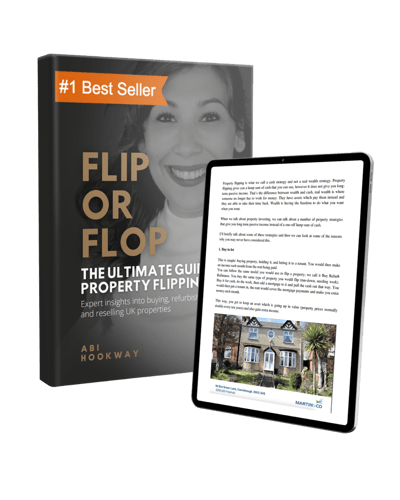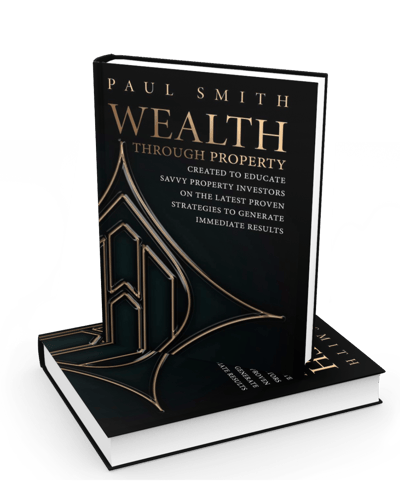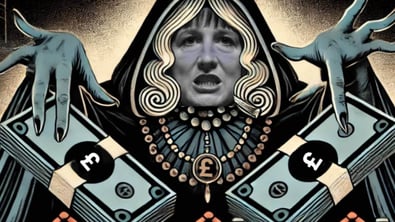If you're a property investor in the UK, you can't afford to overlook stamp duty land tax (SDLT). Our comprehensive guide for 2023 has all the essential information you need, from calculating SDLT to estimating your potential payment. Plus, we'll share some effective strategies to help you minimise your tax burden. Don't miss out on this crucial knowledge for successful property investment.
What is Stamp Duty Land Tax?
Stamp Duty Land Tax is a tax that is payable when you buy property or land in the UK. SDLT is calculated based on a tiered system, where the rates of SDLT increase as the property becomes more expensive. The amount you have to pay depends on a range of factors, including whether you already own property and whether it is residential or commercial.
How Much is Stamp Duty Land Tax?
SDLT, or Stamp Duty Land Tax, is calculated based on a "slice" system. This means that as the price of a property increases, so does the rate of SDLT. How many properties you own and how you purchase those properties also impacts what you have to pay.
How much is stamp duty on residential properties?
How much stamp duty you pay will depend on your circumstances and the circumstance of your purchase.
- First-time buyers will pay no stamp duty at all on property which is less than £425,000.
- If you already own a property, no Stamp Duty Land Tax (SDLT) will be charged on any home you plan to live in, as long as the property value is under £250,000.
Here are the rates to pay on a single dwelling:
Source: gov.uk
Stamp Duty on Second Homes and Residential Investment Properties
If you own multiple properties, including those abroad, and the total value of your properties is over £40,000, you will be subject to a higher rate of Stamp Duty Land Tax. This rule is designed to discourage people from buying additional properties and to free up homes for first-time buyers.
Did you know that the higher stamp duty rules can affect not just your own properties, but also properties owned by your spouse or partner, properties you are purchasing jointly, and properties (even held in trust) for someone under 18?
The following exceptions apply:
- If you have sold or given away your previous main home.
- If somebody else has a lease on it which has more than 21 years left to run.
Source: gov.uk
You could get your calculator out to work out your SDLT, but there are also online stamp duty calculators that do it for you, like this one that will save you time and effort.
How Much is Stamp Duty on Commercial or Mixed Use Property?
Did you know that when you purchase non-residential or mixed land or property for £150,000 or more, you are required to pay Stamp Duty Land Tax (SDLT) on increasing portions of the property price?
Don’t get caught out - even if your transaction is under £150,000, you still need to submit an SDLT return.
Non-residential property encompasses a variety of types, such as commercial spaces like shops or offices, properties not suitable for living, forests, agricultural land used for farming purposes, and any land or property that is not part of a dwelling's garden or grounds.
On the other hand, if agricultural land is sold as part of the garden or grounds of a dwelling, such as a cottage with surrounding fields, you will be subject to residential SDLT rates.
Furthermore, a 'mixed' property refers to a property that has both residential and non-residential elements, such as a flat connected to a shop, doctor's surgery, or office.
Source: gov.uk
Want to know how much stamp duty you will pay on a commercial property investment? You can use the HMRC’s Stamp Duty Calculator to find out.
Is there an SDLT Surcharge for non-UK Residents?
Property investors that are not residents of the UK are required to pay 2% more than residents. You can find more details on the additional stamp duty charge here.
How Can You Pay Less Stamp Duty?
It’s unlikely that property investors will be first-time buyers and subject to the favourable benefits that they receive, but don’t be disheartened there are a few ways you may be able to reduce your stamp duty payment when investing in property.
5 ways to legitimately save on stamp duty:
1. Buying a property that is ‘no longer habitable as a dwelling’ will exempt you from SDLT.
Don’t get caught out: What you would count as ‘uninhabitable’ and what counts technically under HMRC guidelines are likely to be quite different!
The key term according to HMRC's guidelines is "dereliction." They emphasize that there is a significant distinction between a property that is completely run-down and one that is still habitable but in need of updates, renovations, or repairs, without any major changes to its structure.
To put it simply, if a building was previously used as a dwelling and still has permission to be used as one, then it is considered suitable for occupancy. Whether or not you personally believe it is suitable as a home for someone is irrelevant.
Some may argue that if a bathroom or kitchen is removed or utilities are disconnected before a sale, the building would no longer be fit for use as a dwelling. However, these types of repairs and modernizations are relatively affordable and quick to carry out. In fact, they are commonly done as part of refurbishments, so they would not exempt the property from paying SDLT (Stamp Duty Land Tax).
2. Probate property may be exempt from SDLT.
Did you know that when purchasing probate properties, you can be exempt from paying stamp duty? It may seem morbid, but purchasing a deceased person’s estate can offer substantial savings.
According to the government website, this exemption applies if you meet the following conditions:
- The purchase is made from the personal representatives of deceased individuals.
- The deceased individual used the property as their main residence for at least two years before their death.
- The land acquired does not exceed 10,000 square meters.
3. Invest in Commercial Property
Though you pay Stamp Duty Land Tax from a lower threshold on commercial property, the contributions are much smaller than on residential property.
4. Buy Multiple Residential Properties in the Same Transaction
If property investors purchase multiple properties from the same seller, such as these stunning apartments from our friends at Redmayne Smith, there are big savings to be made.
6 or more residential properties in a single transaction also become a commercial transaction and would qualify for non-residential SDLT rates through Multiple dwellings relief.
5. Buy Shares in the Company that Commercial Property is held in
If you buy property as a business acquisition, it is possible to only pay 0.5% tax. To do this, you would have to purchase the property as shares in the company, rather than as an asset.
When you purchase shares, you can do so electronically through the CREST system. As part of this process, you'll need to be aware of the Stamp Duty Reserve Tax (SDRT). This tax is applicable to most stocks that can be settled through CREST and is calculated at a rate of 0.5% of the trade value. The tax is rounded up to the nearest penny.
How Do I Create A Tax Efficient Property Portfolio?
Creating a tax-efficient property portfolio in the UK requires careful planning and strategic decision-making.
Understanding SDLT is an important aspect of being a successful property investor in the UK in 2023, but it isn’t the only consideration. By understanding how SDLT works and how much you might have to pay, you can make more informed investment decisions. Use reliable stamp duty calculators to get an idea of how much you might have to pay, and consider ways to reduce your payments.
It is vital that you also remember to take into account other property taxes that may affect your investments. Consider the type of property investment structure that suits your needs best, for example, investing in property through a limited company can provide benefits like lower corporation tax rates and the ability to offset mortgage interest against profits - to find out what savings you can make and how, sign up to our Limited Company Essentials online property course.
For a wider view of the different strategies available, join the UK's leading 2-day property investment training course Wealth Through Property or to get started right now, download our complimentary Wealth Through Property E-book.










